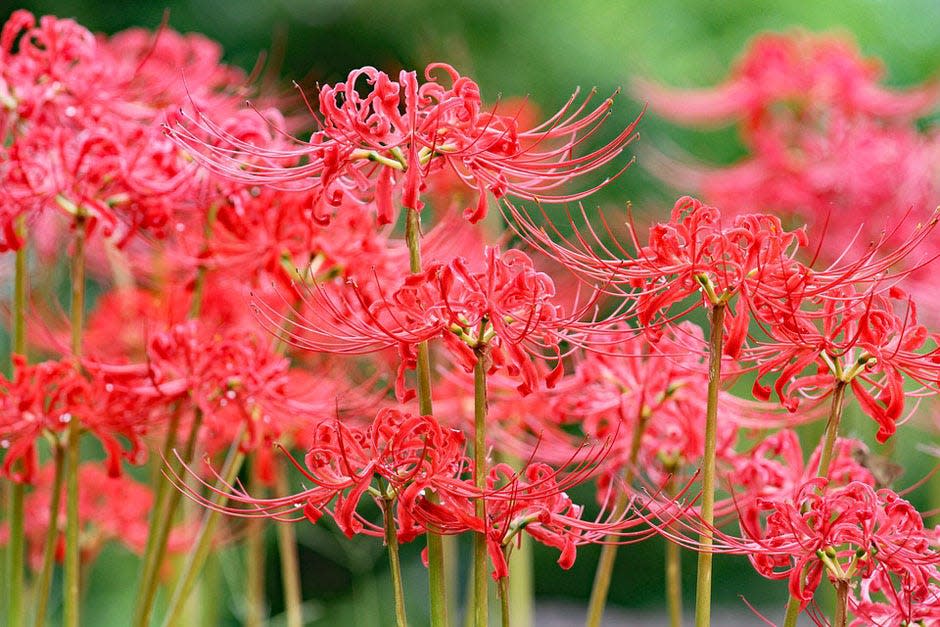Hurricane lilies are easy to grow in Florida. Here's how | Gardening
Hurricane lilies are bulbs that flower suddenly after heavy summer rains in August and September. The common name, hurricane lily, results from a blooming period that coincides with the height of the hurricane season.
The following information is provided by Horticulture Specialist Gary Knox with the University of Florida Institute of Food and Agricultural Sciences.
Hurricane lilies are native to China but are very easy to grow in Florida. Bulbs should be planted during late summer and fall so the “neck” is just below the soil surface. They develop long, narrow leaves that emerge in fall, persist through winter and die down in spring. Leaves turn yellow in spring and should be allowed to die naturally.

Previous column: Frequently asked questions about crape myrtles | Gardening
More: Your lawn's square footage determines fertilizer level. How to apply it correctly | Gardening
Hurricane lilies thrive in sunny to partially-sunny areas such as the edges of woodlands or under deciduous trees. They are low maintenance plants other than the need to divide large clumps every few years to avoid reduced flowering. Hurricane lilies do not require fertilizer or irrigation but grow best in rich, moist soil.
In August and September after a heavy rain (fortunately it doesn’t have to be a hurricane), flowers appear almost magically since there are no leaves to indicate where the bulb is planted (thus providing the common names, magic lily and surprise lily). Leafless stems emerge and quickly grow up to 2 feet tall before being topped by 5-7 tubular flowers in 8-inch clusters. Flowers have narrow, strap-like petals and extremely long stamens, giving a spidery appearance to the flowers (and hence another common name, spider lily).
The most common hurricane lily is Lycoris radiata var. radiata (also known as red spider lily), producing red-orange flowers. This plant is very fast growing and quickly forms large clumps of bulbs that can be separated and planted. Red spider lily has been cultivated since the early 1800’s in the U.S. and is considered an “heirloom plant” in the South.
Lycoris aurea (golden spider lily) produces clusters of golden yellow, trumpet-shaped flowers. Sturdy, bluish leaves emerge in fall and grow up to 24 inches long, producing a larger plant than red spider lily.
Lycoris squamigera (magic lily) may be commonly found in nursery catalogs, but isn’t well-adapted to the heat and humidity of Florida. Magic lily has lilac-pink, amaryllis-like flowers in July.
More than 20 Lycoris species are known. There are countless hybrids but most are not widely grown.
Common hurricane lilies can be found growing in many older homesteads throughout the Southeast. Interestingly, they are not widely grown in nurseries and it may be challenging to find them. Hurricane lily bulbs are more likely to be available in summer and fall from better garden centers as well as some mail-order nurseries.
This article originally appeared on Northwest Florida Daily News: How to grow hurricane lilies in Florida; it's easy | Gardening

